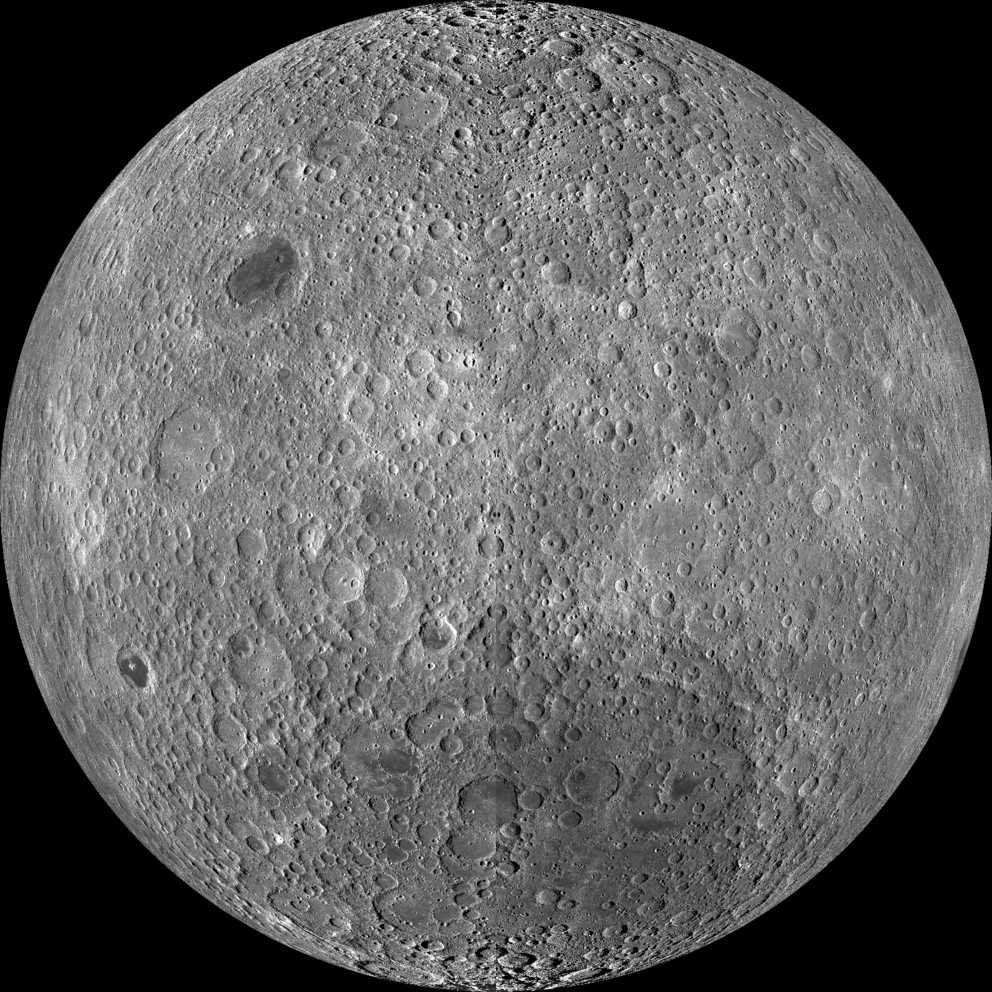In these days of daily image releases from Saturn, Mars, the Moon and other spots in the universe, it’s hard to remember just how exciting it was back in the 1950s and 1960s when a few images trickled out to the world at the time. Perhaps one of the biggest early surprises was how jagged and cragged the back side of the moon looked. Where were the lunar “seas” that we are familiar with on the Earth-facing side of the moon?
About 55 years after the first Soviet images of the farside were sent to Earth, a team of researchers led by graduate astrophysics student Arpita Roy (at Penn State University) may have an explanation.
They say it’s due to the violent way that the Moon formed — likely after a Mars-sized object collided with our Earth, creating a sea of debris that gradually coalseced into the Moon we see today. The huge crash and gathering together heated up both our planet and the Moon, but the Moon got cooler first because it was smaller.
Since the Earth was still hot — radiating at more than 2,500 degrees Celsius (4,500 degrees Fahrenheit) — and the Moon very close to the planet, the heat of the Earth had quite the effect. The far side of the Moon cooled down while the near side remained very hot.
“This gradient was important for crustal formation on the moon. The moon’s crust has high concentrations of aluminum and calcium, elements that are very hard to vaporize,” Penn State stated.

Calcium and aluminum are the first elements that “snow out” as rock vapor cools, and they would have remained in the atmosphere on the Moon’s far side. (The near side was too hot.)
“Thousands to millions of years later, these elements combined with silicates in the Moon’s mantle to form plagioclase feldspars, which eventually moved to the surface and formed the Moon’s crust,” Penn State added. “The farside crust had more of these minerals and is thicker.”
The seas themselves were formed after huge meteors crashed into the Moon’s Earth-facing side, rupturing the crust and letting the basaltic lava beneath burst forth. The crust on the far side was too thick for the meteors to penetrate, in most cases, leaving the rugged surface we are familiar with today.
The research was published yesterday (June 9) in Astrophysical Journal Letters. And by the way, there’s been a flurry of news in recent days about the Earth and the Moon’s formation: the “signal” in Earth’s crust and the oxygen signature on the Moon.
Source: Penn State University


It seems to me the Lunar hemispheric dichotomy isn’t the lack of Lunar Maria on farside, but the 40-60 km thick rubble pile resting on Lunar farside’s surface. This might have been caused by the creation of the putative Procellarum Basin and the re-emplacement of its ejecta to Lunar farside.
Maybe I’m missing something, but isn’t it extremely unlikely that the Moon formed already tidally-locked to Earth, as this theory would require? Or did the Earth remain hot enough for a sufficiently long time for the Moon to become locked before it too solidified?
(a rough calculation from the wiki article on tidal locking gives around 4 million years before the Moon would become locked, but it’s known to be a -very- rough estimate)
>400-1200 My between Moon formation and KREEP formation.